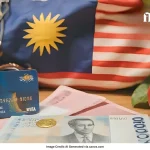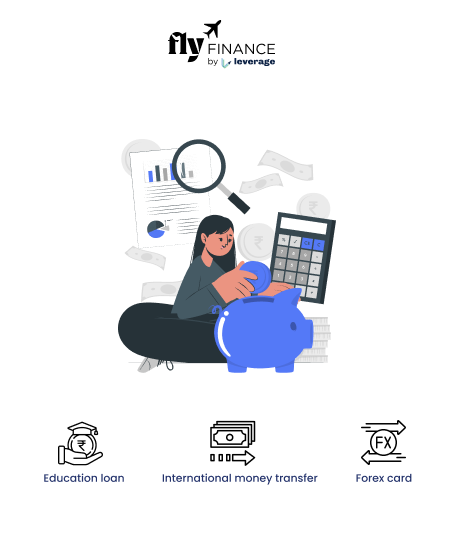Earlier people used the telegraph to transfer money overseas, but since it is not used today the word ‘Telegraph’ still remains with the electronic method – Foreign Telegraphic Transfer, which is a popular way used to send money abroad. Telegraphic Transfer is also called ‘Wire Transfer’ as the money is transferred through cables or telegraphs. This method is used by people a lot to send money abroad as it is secure and at the same time quite convenient. Let us now read in detail about this popular method of overseas fund transfer!
What is a Telegraphic Transfer?
Under Foreign Telegraphic Transfer money is sent electronically from one bank to another using the SWIFT (Society for Worldwide Interbank Financial Telecommunication) network. When it comes to sending money abroad this method is the most common method used by people as it is convenient, secure, and ensures money is quickly sent. Telegraphic transfers can be used for both domestic and international money transfers. There is a certain amount of fees charged by the banks for this type of transfer so it is advisable that you should always check the charges with the bank before initiating this type of transfer. The only thing that is complicated in Foreign telegraphic transfer is the fact that different countries use different terms for this kind of transfer for example – SWIFT payment or transfer, Telex transfers, International bank transfers, International wire transfers, etc.
Also Read: Things to consider when transferring money abroad
How does Telegraphic Transfer Work?
Under Foreign Telegraphic Transfer no cash exchange takes place but rather a set of instructions that defines the nature of the money transfer is exchanged between the sender and receiver bank. While transferring money, the sender provides the details of the recipient’s account and the amount that they need to transfer. After this, the sender’s bank initiates the transfer by sending a message to the receiver’s bank through the SWIFT network about how much money needs to be credited to the recipient’s bank account. Upon receiving the message the recipient’s bank will transfer the fund to the concerned account.
Advantages of Foreign Telegraphic Transfer
There are many advantages associated with Foreign Telegraphic Transfer which is why it is quite popular among people when it comes to transferring money.
- The money is sent to the recipient within 5 working days making the whole transaction quite quick.
- Since it is electronically done, therefore, it eliminates the cash transaction making it extremely secure and at the same time convenient.
- As the transaction is quite speedy, therefore, one gets immune from the fluctuating exchange rate.
- Foreign Telegraphic Transfer makes it quite easy for people to send money abroad. Nowadays, people can also avail of the facility of Wire Transfer over Internet banking.
Disadvantages of Foreign Telegraphic Transfer
The telegraphic transfer has some disadvantages too, so if you are planning to use this method of transferring money then make sure that you weigh both the pros and cons to make the decision.
- Fees are levied on the telegraphic transfer by the banks, which is generally high and there is also no transparency available when it comes to the fees.
- This service is not provided by all banks therefore, this option is limited when it comes to transferring money.
- The transfer can be slow at times as compared to other options available.
- There can be many intermediary banks involved during the transfer process as a result the money is not transferred directly to the recipient.
What Information is Required for a Foreign Telegraphic Transfer?
When it comes to transferring money through a foreign telegraphic transfer there are a lot of details required to initiate a transfer. The bank will ask for the following information from the sender –
- Beneficiary’s SWIFT (Society for Worldwide Interbank Financial Transaction) code and BIC (Bank Identifier Code).
- Name of the remitter
- Bank account details of the remitter
- Details of intermediary bank
- Reason or purpose of transfer
- Name and address of beneficiary bank
- Account number of the beneficiary or IBAN (International Bank Account Number) for payments to UAE and Europe.
- Name of the beneficiary
- Amount to be remitted
- Payment currency
Fees Associated With Foreign Telegraphic Transfer
While doing a foreign telegraphic transfer various fees are levied. Following are the four types of leaves involved in this type of transaction:
- Exchange rate margin – Banks tend to add margin to the exchange rate in order to cover the expenses incurred by them. The margin amount varies according to the method of payment.
- Sender’s bank fees – This fee is determined by the sender’s bank.
- Receiver’s bank fees – This fee is determined by the bank receiving the money.
- Corresponding bank fees – This fee is levied by the corresponding banks. Corresponding banks are intermediary banks that help in international transfer settlements and fund transfers. There can be at times when it is unclear the amount of fee charged by the corresponding banks therefore, it is advisable to do research beforehand.
Must Read: Foreign Money Exchange – How Exchanges Work and Who Governs the Rates
How to do a Telegraphic Transfer?
Many banks provide both offline and online modes for foreign telegraphic transfer therefore, make sure you know whether your bank provides both of them, upon knowing which you can choose according to your convenience. To initiate the transaction you would be needing details like the receiver’s bank account details or IBAN number, SWIFT/BIC code, etc. In the case of Foreign Telegraphic transfer you would need to pay a certain amount of fees which includes intermediary banks fees, the margin on the exchange rate, etc., so be prepared for it.
Also Read: 5 Safest Ways to carry money abroad
FAQs
Ans- Foreign telegraphic transfer is usually completed within 5 working days. One reason behind the popularity of this transfer method is that the transaction gets completed quite quickly.
Ans- Telegraphic transfer is an overarching term for all the fund-transferring methods used to send money both domestically and internationally. SWIFT payments are associated with the transactions that use the SWIFT network in order to transfer money to accounts based in different countries.
Ans- Telegraphic transfer entails electronic transactions to send money from one bank account to another. This type of money transfer method is generally used for sending money abroad.
Ans- Banks take a certain amount of fees for telegraphic transfer which is generally high and there is no transparency also when it comes to the number of fees taken.
Worried about the financial hurdles you are facing in order to fulfill your study abroad dreams? Let Fly Finance help you and make your dreams come true!





























